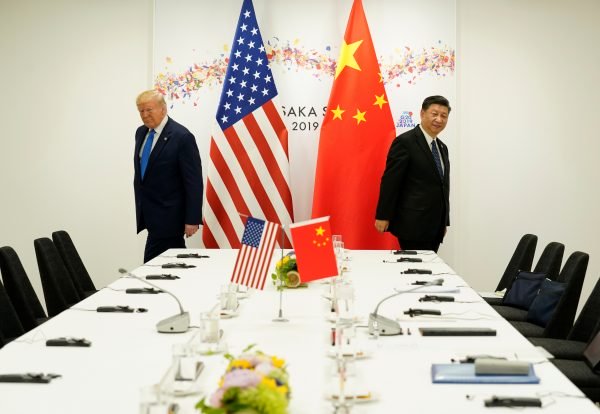
Last week, the US and China reached a so-called “phase one” agreement on trade issues. While President Trump touted the results as a major triumph, in reality it represents a victory for China — and for hardline trade hawks in China. And it may well signal a permanent US retreat against entrenched Chinese state-capitalist mercantilist protection and subsidy. Certainly, as matters stand now, US pressure on Xi Jinping’s authoritarian capitalism is off the table at least until after the presidential election and into 2021.
Though a formal deal will not be signed until January, the details of last week’s tentative agreement are well known. President Trump agreed not to go forward with planned additional tariffs on some $160 billion Chinese goods, and to lower some tariffs already in place. The US, however will still keep tariffs on $360 billion of Chinese goods. In return — according to the administration — Beijing promised to buy up to $50 billion in US farm products in coming years. (Beijing has resisted confirming exact figures, and skeptics have pointed out that even in the best of past years, China’s US agricultural imports never exceeded $26 billion.) It also reiterated promises dating back several years to open up financial services sectors, and promised internal reforms in its intellectual property regime.

The president’s inaccurate boasts and the Office of the US Trade Representative’s (USTR) Fact Sheet misleadingly cite structural reforms as part of the deal, though USTR Robert Lighthizer later more cautiously labeled the agreement a “first step in trying to integrate two very different systems.” In truth, given its limited terms, this is a deal the Trump administration could have gotten three years ago. Indeed, it mirrors deals advanced in 2017 and 2018 by Commerce and Treasury Secretaries Wilbur Ross and Steven Mnuchin.
The limited deal signals that the Trump administration has given
up on the legitimate demands made over the past three years in several
(uncharacteristically) accurate and detailed Section 301 reports describing a
myriad of Chinese protectionist and mercantilist behaviors. The list is long, and
includes lax intellectual property laws and regulations, forced technology
transfers, closed markets for key high-tech sectors, and sweeping definitions
of national and cyber security, among other issues.
China has used its Great Firewall as an industrial policy tool, and used protectionist digital trade rules in the name of “digital sovereignty,” among other things. The goals and implementation of Beijing’s famous Made in China 2025 plan — which aims for domestic control of key technology sectors by that year — remain intact, including the provision of huge subsidies in areas such as semiconductors and electric vehicles. Recently, in a bold move to advance this agenda, Beijing mandated that all government agencies move to install Chinese domestic technology, particularly computers and electronic equipment, by 2021.
As noted above, all of this adds up to a pause in US pressure for
Chinese high-tech structural reforms at least until 2021. President Trump and
his political aides will trumpet the phase one deal as a triumph and will move
during 2020 to further roil relations, with potentially negative effects on the
current politically salubrious US economy. If Trump is reelected, it is by no
means certain that he will take up the cudgels against Beijing. If the
Democrats win, they will likely be almost totally focused on the formidable
domestic agenda they have put forward in the campaign. Thus, it could be well
into the 2020s before the US again confronts Chinese mercantilism.
Finally, there is another dangerous possibility — that the lesson the Chinese have learned from the past three years is that no US president will persevere in a struggle for Chinese structural reform. In The New York Times, Keith Bradsher has argued that trade hawks in Beijing have found a winning strategy: “Stay tough, and let the Trump administration negotiate with itself.” He describes Chinese hardliners as “jubilant” over the outcome and predicts that in the future it will be much more difficult to force compromises on structural issues from the Xi Jinping regime. Further, more moderate voices in Beijing who have argued that economic reform is vital for China’s future have been undermined. So, at this point, after three years of “Tariff Man,” the omens are not good for a successful assault on Chinese predatory state capitalism.
The post The China trade deal: Death knell for Chinese high-tech structural reform? appeared first on American Enterprise Institute – AEI.
